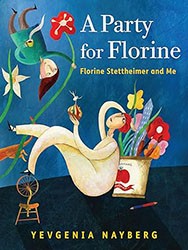Jan Eliasberg is a veteran film and television writer, and her experience shows amply in her first novel Hannah’s War. Part love story, part Holocaust tale, part thriller, the book resists easy categorization; Eliasberg’s delicacy of language and thought surpasses any genre.
Hannah’s War explores the wartime life of a brilliant Jewish female physicist, Dr. Hannah Weiss, but based on a real (and largely unsung) genius named Lise Meitner. Working at the Kaiser Wilhelm Laboratory in 1938 Berlin, Hannah, despite her remarkable ability, is gradually relegated to the basement of a national operation to create the atomic bomb. Her research is increasingly uncredited and co-opted by her Aryan cohorts. Although her scientific prowess is needed, she is Jewish, at a time when Jews were gradually becoming non-persons. In the course of her basement-bound work, she meets supercilious (but disturbingly charming) German fellow scientist, Stefan Frei, son of one of the leading men of the Reich.
Hannah will not remain anyone’s inferior for much longer. Having overheard Stefan banter about the many Jews who have been co-opted to “slave” for their superiors (in power, but not brains), she is bold enough to confront him about the Reich’s unearned status in the scientific world. “You should be splitting atoms that have more than one neutron,” she says, in one example. When Stefan replies, “But Von Laue already tried that, and the resulting — ” Hannah cuts him off: “His work was incomplete…. I can’t give you a simple answer, Dr. Frei, particularly if I’m not allowed to participate in the experiments. But that’s what I’d have my Jewish slaves working on, if I were you.”
Soon, the plot takes an unexpected turn, as Stefan seems to become more compassionate toward the beautiful and brilliant Hannah. She, in turn, begins to trust him — even allowing him to help her young niece, Sabine, escape the camps — which leads to the other part of the plot.
In New Mexico of 1945, now working on the Manhattan Project with Robert Oppenheimer, Hannah is suspected of sending secrets to Stefan Frei — an act of treason for which she faces execution. The war is ending, and the secrets of the atom bomb must not fall into enemy hands. Do Hannah’s notes to Stefan reveal her to be helping the Nazis? Or is Stefan, with Hannah’s help, giving the Nazis misleading information, thus leading them on a blind path? Is her love affair real, or has she been duped, risking not only her own life, but her adoptive country’s existence? Did Stefan lead Hannah’s niece Sabine to freedom — or to a certain death?
In Hannah’s new American milieu, Hannah meets an American operative, Jack, who must decide on her innocence or guilt. Fascinatingly, Jack, too, harbors a complex and painful past, which unfolds in layers under Hannah’s keen gaze. Even as Jack explores Hannah’s affair with a son of the Reich, Jack slowly becomes aware of his own cynicism about the world — and more particularly, about romance.
That a novel that deals fluently with physics, espionage, and Jewish tragedy can also become a deeply affecting emotional tale — with a transcendent, redemptive vision of love— is a tribute to its hugely gifted author.



